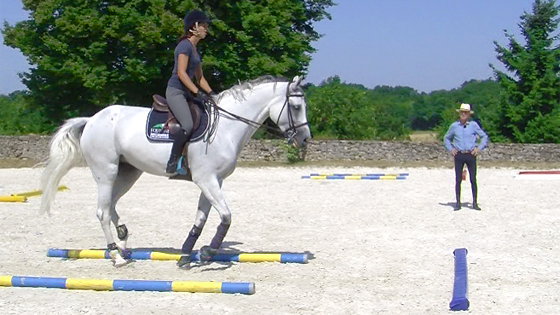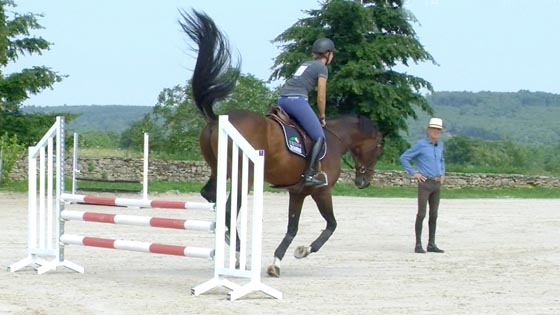Exercise to transition between flat work and jumping

The exercise set-up encourages the rider to pay close attention to all the parameters required for a clear round.
This exercise will help you overcome the technical difficulties of a course without straining your horse. It can be practised by riders of all levels and will help you gain correct habits: a symmetrical position, a straight horse in the approach and landing, follow a precise track in the turns and on straight lines, get ready and anticipate each action, keep a steady rhythm.
They start the session with some trot work. It is recommended for less experimented riders or horses to pratise it first at a walk. It would allow the horse to discover the set up and not be surprised.
Charlotte doesn’t have any problem performing the exercise as long as she stays mentally concentrated and focused on her position. However, as soon as she glances down, even for a fraction of a second, she loses her focus and position. The response is immediate: the horse gets out of the track, modifies his rhythm or even steps on the flexy jumps. The rider needs to control the situation at any moment in her position but also in her mind.
It will help Charlotte find a good balance between too much control at the canter and a horse who gets above the bit and rushes. The goal is to obtain a steady cadence throughout the exercise especially before and after the flexy-jumps.
Once again, we can notice the importance of anticipating and preparing for each action to be successful throughout the exercise.

